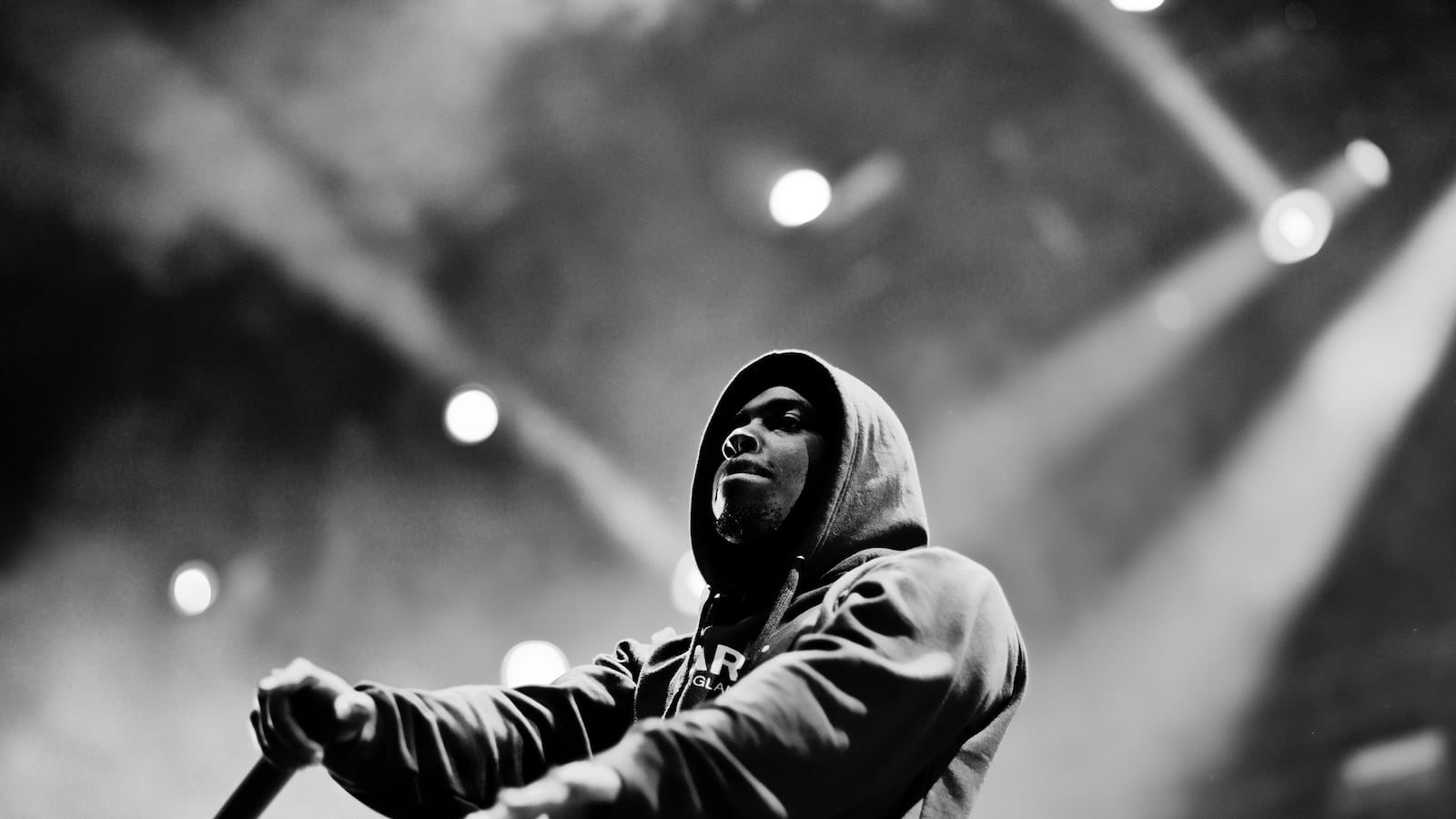In hip-hop, the sophomore album is the album that validates an artist’s historical standing. So many legendary rap artists have had relatively short careers, so while longevity is celebrated, there is something to be said for establishing one’s legend fairly early. Are you a “hot” rapper or an era-defining rapper? Are you just one in the crowd or leading the charge? Some of hip-hop’s best sophomore albums were the result of brilliant artists refusing to let fans and critics pressure them into repeating themselves.
Kendrick Lamar’s good kid, m.A.A.d city was arguably the best-reviewed hip-hop album of the 2010s; an acclaimed major label debut that met and exceeded the lofty expectations the West Coast upstart had been building ever since his earliest mixtape appearances. The lynchpin of Top Dawg Entertainment had fully arrived, and he had the artistic clout and critical acclaim to put him in the most rarified air of contemporary artists. This guy had some shit to say. And this guy knew how to say it.

In the almost two-and-a-half years since good kid, Lamar has become something of a media darling (he’s appeared on popular shows like Saturday Night Live and The Colbert Report and made the cover of GQ) while still managing to maintain the image of an outsider. He doesn’t appear to run toward the spotlight, though it’s clear that he doesn’t shy away from it, either. He’s not quite a reluctant superstar, but he doesn’t seem to be an enthusiastic one. As his star rose, (and as tracks began hitting the Web last fall), anticipation began to build feverishly for Lamar’s follow-up to good kid, m.A.A.d city. Would he be able to deliver anything nearly as potent the second time around?
The short answer? Yes.
ATLiens Outkast put Atlanta rap on the hip-hop map with their earthy debut album. The duo of Andre and Big Boi exceeded expectations by daring to be different on their second album, an ethereal mix of Dirty South grit and subtly Afrofuturistic aesthetics
Lamar’s To Pimp A Butterfly hit iTunes about a week ahead of schedule, much to the chagrin of his management. Anthony Tiffith, CEO of TDE, angrily tweeted (and then deleted), “I WOULD LIKE 2 PERSONALLY THANK @Interscope FOR FUCKING UP OUR RELEASE…SOMEBODY GOTS 2 PAY 4 THIS MISTAKE!!!! #TOP” The album comes on the heels of three pre-release singles: “I,” “The Blacker the Berry,” and “King Kunta,” which have all been generating tremendous buzz online.
And if good kid, m..A.A.d city was a reflection of a young black male growing up in Compton and growing more concerned about the world around him, To Pimp A Butterfly is that kid being unleashed on the world, recognizing the scope of that world and coming to grips with his place in it. More musically varied, thematically ambiguous, and a bit more challenging than his major label debut, K. Dot’s second album isn’t always as sentimental, but it’s consistently more emotionally gripping.
The Marshall Mathers LP Eminem became a superstar with wacky raps and a dark sense of humor, but on his second major label album, the Detroit rapper’s humor was somewhat subdued in favor of angry introspection. Channeling his rage into some of his era’s most creative raps, Slim Shady proved he was no novelty act.
The album opens with “Wesley’s Theory” and a sample of “Every Nigger Is A Star” by Jamaican soul singer Boris Gardiner, from the obscure film soundtrack of the same name. “When I get signed, homie, Imma act a fool,” Lamar opens, before referencing everything that he expects to be able to buy once he gets money—mentioning everything from women to weaponry while alluding to Uncle Sam coming to take a bite out of whatever he earns as he continues to spend recklessly (“I’ll Wesley Snipes yo’ ass before 35.”) George Clinton and Thundercat purposefully evoke classic P-Funk and early 2000s Outkast throughout the Flying Lotus-helmed track.
From that opening track, it’s clear that To Pimp A Butterfly is as conflicted as Lamar has ever been, and not just on the already-controversial “The Blacker the Berry,” which was released online last month. All over the album, the rapper laments what fame is doing to his sense of self while acknowledging how desperately he sought success. In terms of subject matter, the hollow life of a rap superstar is hardly new territory, but Lamar manages to put across his ponderings without the typical clichéd rants against invisible haters or tortured-but-flossy anthems of conspicuous consumption. Lamar seems more concerned with the spirit and how to maintain his psychological well-being in the face of his more sinful impulses.
Death Certificate Ice Cube proved that he was even more visionary and focused without N.W.A., but following his solo debut, the Compton legend joined the Nation of Islam and became a movie star. His second album was angrier, more political, and a sonic manifesto of black rage.
“King Kunta” is the most chest-beating moment on the album, with Lamar dismissing those who would try to hinder his rise or ride his coattails over beats reminiscent of late ’90s DJ Quik. Snoop keeps the West Coast vibe obvious, delivering a guest appearance that feels more inspired than he’s sounded in years. “I swore I wouldn’t tell—but most of y’all sharing bars like you got the bottom bunk in a two-man cell,” Kendrick raps. “Something’s in the water.” It’s an anthem, and when Lamar bellows “black man, taking no losses,” it sounds like he means every word of it.
“These Walls” opens with orgasmic moans before falling back into a winningly laid-back groove that wouldn’t have sounded out of place on The Love Below over a decade ago. And while the innuendo of the song’s themes is what grabs the listener initially (“I love it when I’m in it”), there’s the standard K. Dot thoughtfulness in the verses—low-key misogyny, lust, and musings about his complicated relationship with a woman. On “u,” Lamar laments that “loving u is complicated” and how he “preached in front of one hundred thousand but never reached her,” with the ambiguity in the lyric only amplifying the sense of frenzied helplessness in Kendrick’s delivery—before the song collapses emotionally, with a cracked-voice Kendrick playing antagonist to his own persona, drunkenly wagging his finger at his own indifference towards a friend’s troubles.
The Pharrell-produced “Alright,” is one of the more upbeat moments on an album that isn’t overly preoccupied with making the listener feel good. Even this thumper, built around ghostly harmonies and sax wails, is more of a cathartic release than a typical “turn up” anthem. The earthy live feel of the “Hood Politics” intro and the version of “I” included here gives the album a lived-in quality; there’s a timelessness to the music here. The Sufjan Stevens-sampling “…Politics” is a moody, dark groove from Thundercat that manages to evoke traditional West Coast sounds (and the latent paranoia of late-night L.A. cruising) while also bearing influences of the ever-popular atmospheric OVO sound.
“Critics wanna mention that they miss when hip-hop was rapping, muthafucka if you did, then Killer Mike would be platinum.”
It Was Written After becoming a teen legend for delivering effortlessly brilliant rhymes about project life, Nas channeled his inner Mafioso with a slicker and more wide-ranging sophomore project. Refusing to be boxed in cost him some fans in the short term, but amplified his legend in the years to come.
The aforementioned “…Berry” is arguably the most topical song on the album, and in the context of the full album, the song is still as uncomfortable as ever, with Lamar attacking white supremacy and his own hypocrisy as an allegory for, in his view, the current state of race in America. But the most evocative moment is the somber “How Much Does A Dollar Cost,” where Kendrick examines interactions with the destitute of society—specifically, his contempt for a begging man and what that says about his own character—against a downtempo beat that features James Fauntleroy and allows Lamar’s storytelling to take center stage; until the legendary Ron Isley adds his own mournful vocals to the song’s coda. It’s a brilliant track that showcases what Lamar does well: topicality and creativity without sounding overwrought. “I” was released months ago, and positioned near the end of the album, it’s another welcome bit of beaming confidence on an LP that’s awash in Lamar’s inner conflict. The live version that’s included here highlights the track’s musicality and just how deftly the Isley’s “That Lady” was interpolated for this anthem of self-love, as well as Lamar’s infectious personality. If “MC” still means to “move the crowd,” the Compton kid is a master; even when he’s not cranked up to 11, Lamar understands how to engage the people.
The album closer “Mortal Man,” is an extended track. It’s a beautiful swan song, with Lamar asking “when shit hit the fan, is you still a fan?” over an excellent Houston Person sample and more backing vocals from Fauntleroy. The song fades into an protracted mock interview between Lamar and the late Tupac Shakur. It’s an affecting way to close the album, even if it does feel a bit on the nose for an album that’s been such a brilliant display of uncertainty and conflict. It’s easy to scoff at the decision to stage a dialogue with a fallen hip-hop legend for the final few minutes of an album, but Lamar manages to keep the moment from feeling exploitative or disingenuous.
Late Registration Kanye decided that he wanted to be more than the millennial hip-hop everyman. After proving that a “regular guy” could conquer the rap game, Ye decided to be anything but regular; releasing an ambitious and indulgent album that proved hip-hop could be opulent and remain sincere.
The sophomore album holds a lot of weight in the minds of fans and critics. Lamar deciding to build on what he did with good kid… would have been a safe decision—and there are numerous examples of artists’ reach exceeding their grasp when they’ve tried too hard to go against the grain in following up a classic. But somehow, someway, Kendrick Lamar managed to go in a completely different direction, challenging himself—and the listener—artistically without falling into the typical pretentious traps that often comes with ambition. To Pimp A Butterfly is further evidence that Kendrick Lamar is an artist on a creative roll, and his vision only seems to be getting sharper as he goes along.






